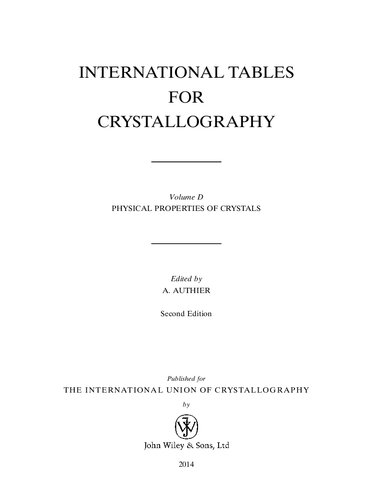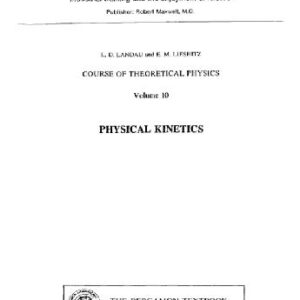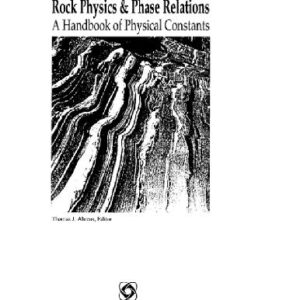Volume D is concerned with the influence of symmetry on the physical and tensor properties of crystals and on their structural phase transitions. This role is very important in many different disciplines of the science of materials, such as crystallography, elasticity, solid-state physics, magnetism, optics, ferroelectricity and mineralogy, and Volume D deals with all these aspects in a unified way. The volume is accompanied by two pieces of software; one which supports Chapters 1.1 and 1.2 for the determination of irreducible group representations and tensor components, and one which supports Part 3 on structural phase transitions.
Part 1 introduces the mathematical properties of tensors and group representations and gives their independent components for each of the crystallographic groups. The accompanying software enables one to determine the irreducible representations of finite point groups in three dimensions (the 32 crystallographic groups and the groups of quasicrystalline phases) and the independent components of a tensor of any rank for each of these groups. As examples, several tensor properties of crystals are described: elastic properties, thermal expansion, magnetic properties, linear and nonlinear optical properties, transport properties, atomic displacement parameters and local crystal properties, of special interest to crystallographers. A separate chapter is devoted to the particular case of tensors in quasiperiodic structures.
Part 2 is devoted to the symmetry aspects of excitations in reciprocal space: phonons, electrons, Raman scattering and Brillouin scattering.
Part 3 deals with the symmetry aspects of structural phase transitions and twinning. A prominent feature is the joint description of twinning and domain structures, which are usually presented in completely separate ways in handbooks of physics and mineralogy. The theory of structural phase transitions relates the symmetry characteristics of the transitions to their physical characteristics. The application of the symmetry principles that derive from this theory is illustrated by the tables contained in the accompanying software, which also contains tables of tensor properties at any group-subgroup phase transition.
The first edition of Volume D was reviewed by M. Moore (Crystallography News, No. 90, September 2004, pp. 11-12) and P. Paufler [Acta Cryst. (2006). A62, 316-318].






Reviews
There are no reviews yet.